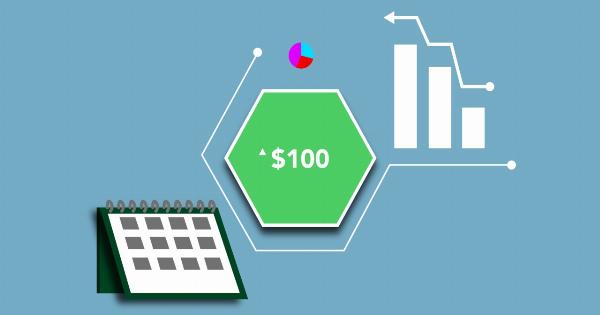Acute stroke is a medical emergency that requires prompt intervention to minimize brain damage and improve patient outcomes.
Endovascular thrombectomy, a minimally invasive procedure, has emerged as a highly effective treatment method for acute strokes caused by large vessel occlusions. This article will explore how endovascular thrombectomy is improving acute stroke recovery and revolutionizing stroke care.
Understanding Acute Stroke
Acute stroke occurs when blood flow to the brain is interrupted, leading to brain cell death and potentially irreversible damage.
Ischemic stroke, which accounts for the majority of acute strokes, is caused by a blockage or clot in a blood vessel supplying blood to the brain. Traditional treatment options for ischemic stroke include intravenous thrombolysis with tissue plasminogen activator (tPA) or aspirin therapy.
However, these treatments may not be effective for large vessel occlusions, necessitating the need for endovascular thrombectomy.
What is Endovascular Thrombectomy?
Endovascular thrombectomy is a procedure performed under radiological guidance to remove blood clots from obstructed blood vessels in the brain.
It involves the use of specialized tools, such as a catheter or stent retriever, to physically remove the clot and restore blood flow. This procedure is typically carried out by an interventional neuroradiologist or neurosurgeon in a specialized stroke center equipped with advanced imaging technology.
The Benefits of Endovascular Thrombectomy
Endovascular thrombectomy offers several advantages over traditional treatment methods for acute stroke:.
- Improved Reperfusion: This procedure allows for rapid and complete restoration of blood flow to the affected area of the brain, thereby salvaging viable brain tissue and reducing the risk of disability.
- Extended Time Window: Unlike intravenous thrombolysis with tPA, endovascular thrombectomy can be performed within a larger time window, enabling more patients to benefit from the treatment and lowering the risk of long-term disability.
- Greater Efficacy: Studies have shown that endovascular thrombectomy significantly improves clinical outcomes compared to standard medical therapy alone, leading to reduced mortality rates and enhanced functional recovery.
- Reduced Risk of Hemorrhage: Endovascular thrombectomy is associated with a significantly lower risk of intracranial hemorrhage compared to intravenous thrombolysis, making it a safer treatment option for certain patients.
The Procedure: Step-by-Step
Endovascular thrombectomy involves the following key steps:.
- Patient Evaluation: The patient undergoes a thorough assessment, including a physical examination, neurological evaluation, and imaging studies (such as a computed tomography scan or magnetic resonance imaging) to determine the presence and location of the clot.
- Accessing the Blood Vessel: A small incision is made in the groin, and a catheter is inserted into the femoral artery. Using fluoroscopic guidance, the catheter is carefully navigated through the vascular system to the site of the clot in the brain.
- Clot Retrieval: Various techniques can be employed to remove the clot, including aspiration, thrombofragmentation, or the use of stent retrievers. The choice of technique depends on the characteristics and location of the clot.
- Restoring Blood Flow: Once the clot is successfully removed, blood flow is restored, allowing oxygen and nutrients to reach the affected brain tissue.
- Post-Procedural Care and Monitoring: The patient is closely monitored in a dedicated intensive care or stroke unit, with frequent imaging and neurological assessments performed to detect any complications and ensure optimal recovery.
Evidence and Success Rates
Extensive clinical trials and studies have demonstrated the efficacy and success of endovascular thrombectomy in acute stroke treatment:.
- One landmark study, the “Dawn” trial, showed that patients who underwent thrombectomy within 24 hours of stroke onset had significantly better functional outcomes compared to those receiving standard medical therapy alone.
- The “Positive” trial revealed a dramatic reduction in disability in patients treated with thrombectomy compared to medical management alone, leading to a paradigm shift in acute stroke care.
- A meta-analysis of multiple studies demonstrated a 50% reduction in mortality rates and a twofold increase in functional independence in patients receiving endovascular thrombectomy.
Challenges and Limitations
While endovascular thrombectomy has revolutionized acute stroke care, certain challenges and limitations remain:.
- Access to Specialized Centers: Availability of endovascular thrombectomy centers is limited, particularly in rural areas, leading to disparities in access to this life-saving treatment.
- Time Sensitivity: The success of endovascular thrombectomy is highly time-dependent, and delays in treatment initiation can lead to poorer outcomes. Efficient systems of stroke identification, transportation, and transfer are vital to ensuring timely access to this procedure.
- Expertise and Training: Performing endovascular thrombectomy requires specialized skills and expertise. Ensuring an adequate number of trained neurointerventionalists and neurologists is crucial to meet the growing demand for this procedure.
The Future of Stroke Care
With ongoing advancements in technology, endovascular thrombectomy holds the potential to further enhance acute stroke recovery:.
- Artificial Intelligence: The integration of artificial intelligence algorithms into imaging systems can aid in early stroke detection and facilitate faster decision-making regarding thrombectomy eligibility.
- Device Innovations: Continued research and development in endovascular devices may lead to more effective and efficient clot removal techniques, further improving patient outcomes.
- Telestroke Services: The use of telemedicine and telestroke networks can enable rapid consultations and decision-making, connecting stroke specialists with patients in remote locations, thereby extending the reach of endovascular thrombectomy.
Conclusion
Endovascular thrombectomy has revolutionized acute stroke treatment and significantly improved patient outcomes. This procedure offers rapid and effective clot removal, restoring blood flow to the brain and salvaging viable tissue.
Despite certain challenges, the future of stroke care looks promising, with ongoing advancements in technology and increasing access to specialized centers. By leveraging the benefits of endovascular thrombectomy, healthcare professionals can continue to make substantial progress in improving acute stroke recovery and minimizing long-term disability.






























